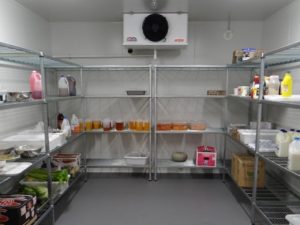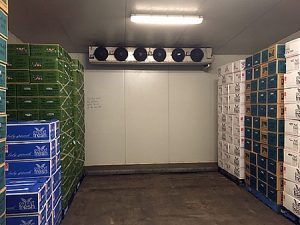Cool Room Storage: A Comprehensive Guide

Introduction
Cool room storage is an essential aspect of the food industry, especially for businesses that require storage of perishable goods. A cool room is a temperature-controlled room designed to keep food products fresh, safe, and of high quality. This type of storage helps businesses to reduce food waste and maintain inventory levels efficiently. In this article, we will provide a comprehensive guide on cool room storage, including its benefits, the types of cool rooms available, and how to maintain them.
The Benefits of Cool Room Storage
One of the primary benefits of cool room storage is that it helps to extend the shelf life of perishable goods. By controlling the temperature and humidity levels, cool rooms prevent food from spoiling and reduce the growth of harmful bacteria. This leads to fresher, safer, and higher-quality food products. Additionally, cool room storage helps to reduce food waste by ensuring that products are stored properly, reducing the risk of spoilage.
Another benefit of cool room storage is that it can help to streamline business operations. Having a well-organized cool room can help businesses to manage their inventory more efficiently, reducing the time and effort required to locate products. This can help to improve productivity, reduce labor costs, and improve customer service.
Types of Cool Rooms
There are several types of cool rooms available, each designed for different applications. The most common types of cool rooms include:
Walk-in Cool Rooms
Walk-in cool rooms are the most common type of cool room and are typically used in restaurants, cafes, and other food service businesses. They are designed to be walked into and can store a large volume of products. Walk-in cool rooms come in various sizes and can be custom-built to fit specific requirements.
Reach-in Cool Rooms
Reach-in cool rooms are smaller than walk-in cool rooms and are typically used in convenience stores and small cafes. They are designed to be accessed from the front and are suitable for storing smaller quantities of products.
Modular Cool Rooms
Modular cool rooms are pre-fabricated and can be assembled on-site. They are typically used in commercial kitchens, hospitals, and other facilities that require temperature-controlled storage. Modular cool rooms are designed to be customized to fit specific requirements, making them a versatile option.
Maintaining Cool Rooms
Proper maintenance is essential for keeping cool rooms in good working condition. Regular maintenance can help to prevent breakdowns, reduce energy consumption, and extend the lifespan of the unit. Here are some tips for maintaining cool rooms:
Cleaning
Regular cleaning is essential for maintaining a hygienic cool room. It is recommended to clean the cool room at least once a week, including the floors, walls, and shelves. It is also important to clean the condenser coils and fan blades regularly to prevent dust and debris buildup.

Temperature Control
Temperature control is critical for maintaining the quality and safety of food products. It is essential to monitor the temperature regularly and adjust it as necessary to ensure that it remains within the recommended range. Temperature logs should be kept and reviewed regularly to identify any issues and make adjustments as necessary.
Door Seals
Door seals are an essential component of cool room maintenance. Damaged or worn door seals can allow warm air to enter the cool room, leading to increased energy consumption and reduced efficiency. It is recommended to inspect the door seals regularly and replace them as necessary.
Regular Maintenance
Regular maintenance is essential for keeping cool rooms in good working condition. This includes inspecting the compressor, evaporator, and other components for signs of wear and tear, and replacing any worn or damaged parts promptly. It is also recommended to have a professional technician perform annual maintenance to ensure that the cool room is functioning correctly.
Conclusion
Cool room storage is a critical component of the food industry, helping businesses to maintain the quality and safety of perishable goods. By controlling the temperature and humidity levels, cool rooms help to reduce food waste and improve productivity. There are several types of cool rooms available, each designed for different applications, and proper maintenance is essential for keeping them in good working condition. By following the tips outlined in this article, businesses can ensure that their cool rooms are operating efficiently and effectively. For cool room storage see here.

Recent Comments